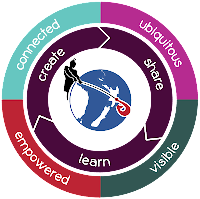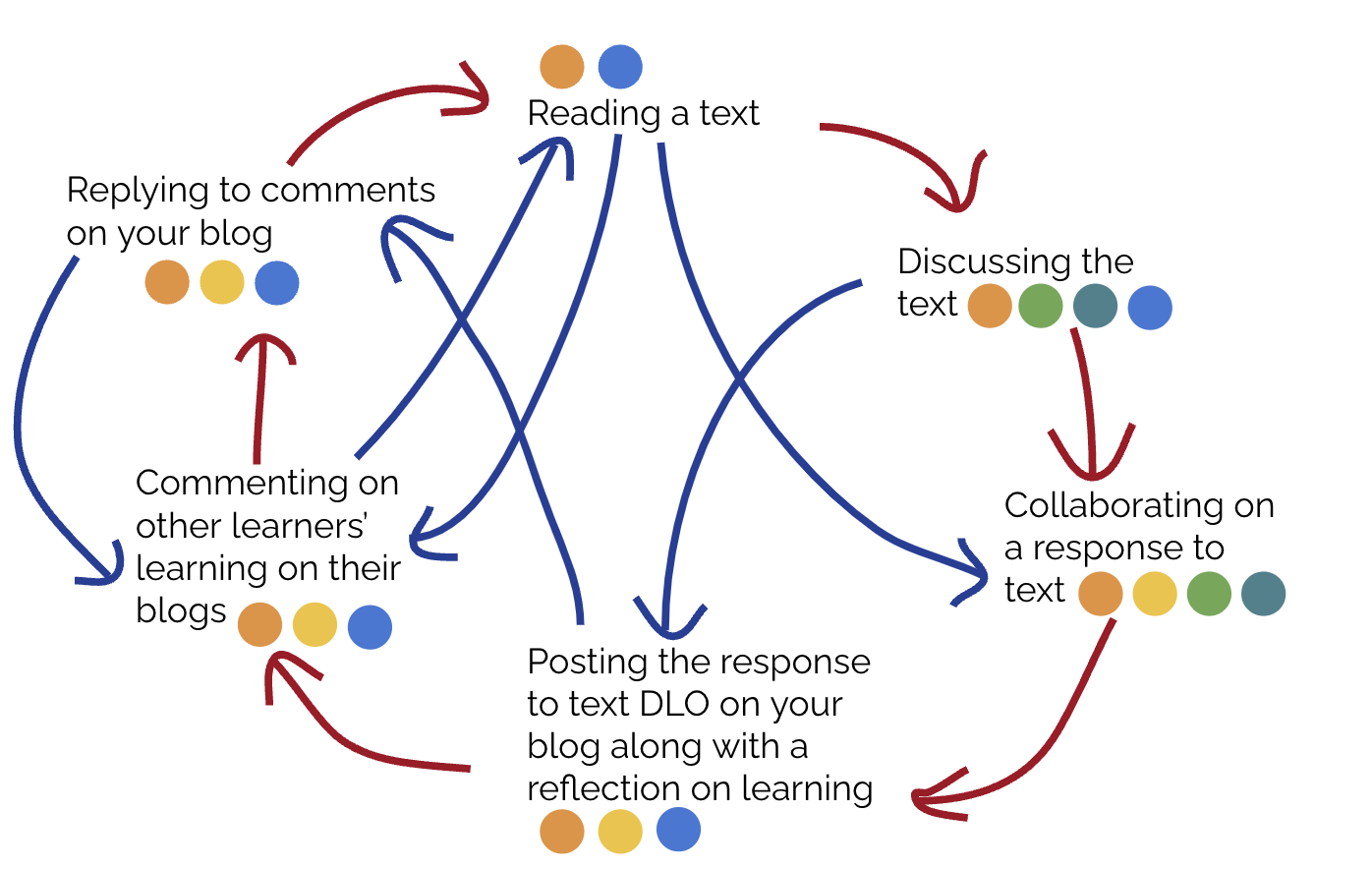 Sharing: Tohatoha Manaiakalani Pedagogy
Sharing: Tohatoha Manaiakalani Pedagogy

“Work with learners to establish an authentic audience for their learning outcomes.”
We are very quick to share the movies we watch, or online content, but sharing what we are reading is not something that we are as quick to do. Manaiakalani wanted a way for the students to have an audience for their thoughts/opinions of the texts they are reading. Blogging is now the primary way that we “share” our learning with the wider world. Instead of saying, “Be sure to blog your learning,” change it to, “Be sure to SHARE your learning.”
 Participating in a Reading Community
Participating in a Reading Community
Reading for pleasure: Being part of a reading community with shared values, interest, context and participation and intentionally (as the teacher) create a community thats “fosters shared contributions of akonga, kaiako, whanau, & a wider community online, in a valued reading practices.”
How are we already planning to include share opportunities for our students in our everyday learning? This is something to have a good think about. I know my students share their learning to their blogs but are they sharing with each other and using time to engage in providing feedback to their peers? I know this is something we have started to do but how can we make it an everyday (or every week) planned activity next term and perhaps earlier next year?
 Visible Reading and Learning
Visible Reading and Learning
Blogging Kaupapa is indicated on the blogging checklist, and how to correctly make a blog post. However, it is important for us to remember that these are the kids’ blogs and they should have some ownership around their blogs to share their life (and educational) experiences.
 Feedback and Reflection
Feedback and Reflection
Success criteria might push the disposition of the students into new uncharted areas of literacy. It does not always have to be about the product. When providing feedback to students, they should be able to voice where they are now in their learning and where they need to go next (generative feedback→ feedback/feed forward for the future). Quality of the feedback is critical to step students into those next steps. It needs to be specific, not simply a “good job” or “well done you!”
Peer feedback needs to be scaffolded and introduced in a way that sets up students for success.
What is your system for providing feedback? It needs to be meaningful and purposeful for the learner.
This is a great reminder of 3 ways to provide specific types of feedback to students.
 Learner Collaboration and Connection
Learner Collaboration and Connection
Part of sharing is collaboration and it is an important skill of life. In order to have others care about what you are sharing, you need to care about what others are sharing. Students need to realise this and we need to help create a reciprocal environment that allows students to do this.

When listening and responding to reading, our digital affordances come into play. We have many ways to easily have this happen in our learning spaces using their Chromebooks. This is also a great time to bring paired reading into the class with students providing feedback for each other. How are partners chosen and do we have a place in our timetable for this?
To Do: Revisit our reading learner’s survey from the beginning of the year. When would be a good time for our follow up survey, and which questions should I include? This is something that I need to do and collate the data to compare to the responses I received at the beginning of the school year.

When blog commenting, and responding to comments students will hit multiple times the various aspects of literacy that we always want to enable our students to communicate.

More realistic view of the blogging literacy cycle.
Sharing with Whanau & Community
How can we help foster opportunities for families to have deliberate connections to hook back to home what we are reading in class.
Currently, in my classroom, I encourage students to read a chapter each night and discuss what they have read with a family member. I also encourage them to read their chapter with a family member (taking turns reading aloud depending on their reading level). Many parents I have discussed this with have also appreciated it when I have encouraged them to read texts in their first language with their children and have discussions to carry over those reading and comprehension strategies.
Moving forward, it would be fun to have whanau share the books (like a 2-3 minute book chat) they have read together on the student blogs. This might be something fun to do over the term 3 holidays for some fun prizes. Hmmmm….
And that's a wrap....
Wow! While filling out our teacher survey about the Pillar's of Practice, and the RPI Survey, I was genuinely amazed at how much we covererd in our 9 days! I spent some time looking back over my blog posts while answering the questions and there is such a wealth of information shared on my blog (and tucked away in my Google Drive) from this course.
A massive thank you to the Manaiakalani RPI team who facilitated our cohort. Also, a big thank you to Georgie and my "group 2" peeps for all the encouragement, laughter and drive to be the best group in the cohort always done first.



